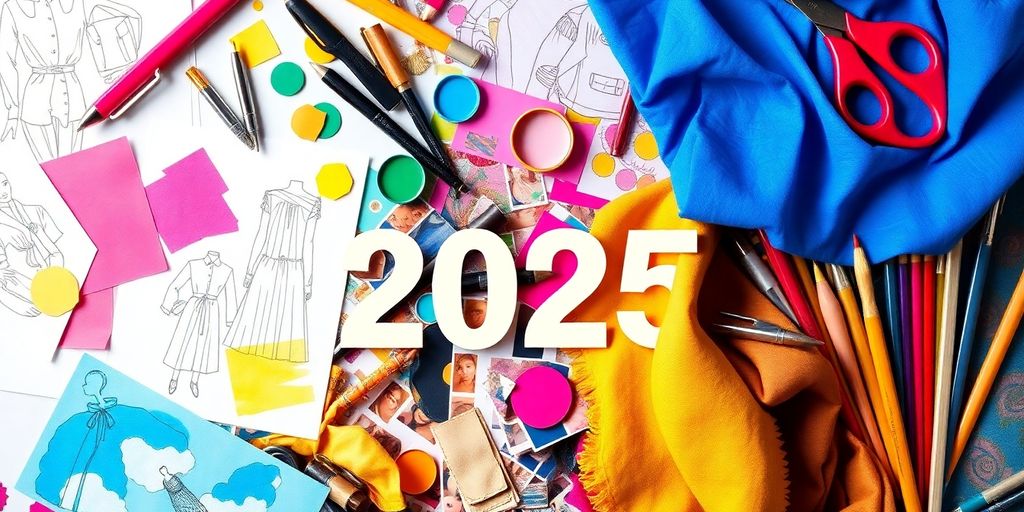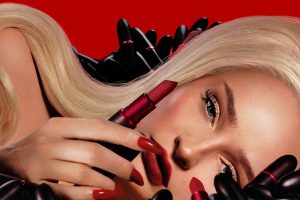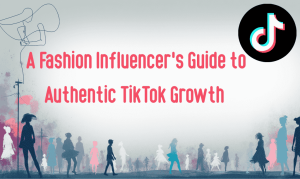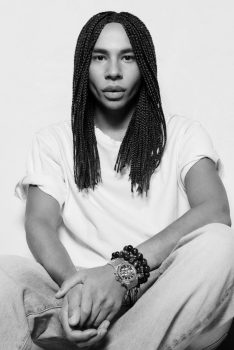If you’re looking to jump into the world of fashion design, choosing the right college is a big deal. With so many options out there, it can be tough to figure out which schools will actually help you reach your goals. In 2025, the landscape of fashion education is changing, and we’re here to help you navigate through the best fashion designing colleges that can turn your creative dreams into reality. Let’s explore what these programs offer and how they can set you on the path to success.
Key Takeaways
- Research various fashion design programs to find the best fit for your interests.
- Consider specializations like 3D design or technical design to stand out in the industry.
- Develop essential skills such as sewing, digital design, and patternmaking.
- Look into both campus-based and online colleges to find flexible learning options.
- Networking and internships are key to launching your fashion career.
Exploring Fashion Design Programs
So, you’re thinking about diving into the world of fashion design? Awesome! One of the first big steps is figuring out what kind of program is the right fit for you. There are a bunch of options out there, each with its own focus and intensity. Let’s break down some of the common types of programs you’ll find.
Overview of Programs
Okay, so what’s the big picture? Fashion design programs come in all shapes and sizes. You’ve got your traditional four-year bachelor’s degrees, which give you a really solid foundation in everything from design theory to garment construction. Then there are associate’s degrees, which are typically two years and can be a great way to get your foot in the door. And don’t forget about certificate programs – these are usually shorter and more focused on specific skills. The best program really depends on your goals and how much time and money you’re willing to invest.
Fashion Design Foundation
Think of a foundation program as your fashion design boot camp. It’s all about building those essential skills that you’ll need no matter what area of fashion you end up in. You’ll learn about things like sketching, color theory, basic sewing, and pattern making. It’s a chance to experiment and figure out what you’re really passionate about. Plus, it can be a great way to build a portfolio if you’re planning to apply to a more advanced program later on. These programs are a great way to explore fashion designers and their work.
Fashion Design Certificate
Alright, so you’ve got the basics down and you’re ready to specialize? That’s where certificate programs come in. These are designed to give you in-depth training in a specific area, like bridal design, sportswear, or even sustainable fashion. They’re usually shorter than degree programs, so you can get the skills you need and get out into the industry faster. Plus, they can be a great way to boost your resume and show employers that you’re serious about your craft.
Certificate programs are ideal for individuals seeking focused training in a specific area of fashion design, allowing for quicker entry into specialized roles within the industry.
Specializations in Fashion Design
So, you’re thinking about diving into fashion design? Awesome! One of the coolest things is how many different paths you can take. It’s not just about sketching pretty dresses (though that’s part of it, of course!). Let’s look at some specializations you might want to consider.
3D Fashion Design
This is where tech meets textiles. Forget just drawing designs; you’re creating them in a virtual space. It’s all about using software to visualize how a garment will look and move before it’s even made. This field is exploding right now, with more companies using 3D tools to speed up the design process and reduce waste. You’ll learn to use programs like Clo3D or Browzwear. It’s pretty amazing stuff.
Fashion Technical Design
Okay, so maybe you’re not super into the super creative, artistic side, but you love the technical stuff? Then fashion technical design might be your jam. These designers are the bridge between the initial concept and the final product. They make sure the garment fits correctly, the construction is sound, and the specifications are accurate. Think of them as the engineers of the fashion world. They create tech packs, which are like blueprints for factories to follow. Attention to detail is key here.
Entrepreneurship for Fashion Designers
Want to be your own boss? This specialization is all about giving you the skills to launch and run your own fashion business. It’s not just about design; it’s about marketing, finance, and all the other stuff that comes with being an entrepreneur.
You’ll learn how to create a business plan, manage your finances, build a brand, and market your products. It’s a tough road, but if you’ve got the drive and the vision, it can be incredibly rewarding.
Here are some things you might learn:
- Business Planning
- Financial Management
- Brand Development
- Marketing Strategies
- E-commerce
Essential Skills for Aspiring Designers
So, you wanna be a fashion designer? Awesome! It’s not just about sketching pretty dresses, though. There’s a whole bunch of skills you’ll need to really kill it in the industry. Let’s break down some key areas you should focus on.
Apparel Construction Techniques
Okay, first things first: you gotta know how clothes are actually made. I mean, you can’t just wave a magic wand and expect a gown to appear, right? This means getting down and dirty with sewing machines, understanding different fabrics, and mastering various construction methods. Think of it as the foundation upon which all your designs will be built.
- Basic sewing skills
- Knowledge of fabric types and their properties
- Seam finishes and construction techniques
It’s like learning to cook. You can have the fanciest recipe in the world, but if you don’t know how to chop an onion or boil water, you’re gonna have a bad time.
Digital Design Skills
Forget just sketching on paper – these days, it’s all about digital design. Knowing your way around software like Adobe Illustrator and Photoshop is a must. And increasingly, 3D design software is becoming super important. You can create realistic designs and experiment with different ideas without wasting a ton of fabric. Plus, it makes collaborating with others way easier.
- Adobe Illustrator
- Adobe Photoshop
- 3D fashion design software
Patternmaking and Draping
Patternmaking is basically the blueprint for your designs. It’s how you translate your ideas into actual, wearable pieces. Draping, on the other hand, is more hands-on – you’re working directly with fabric on a dress form to create the shape and silhouette you want. Both are super important for understanding how clothes fit and move on the body. You can find more fashion school resources online.
- Flat patternmaking
- Drafting patterns from measurements
- Draping techniques
Top Fashion Designing Colleges Worldwide

Choosing the right fashion design college is a big deal. It can really shape your career. There are some amazing schools all over the world, each with its own strengths and special programs. Let’s take a look at some of the best.
Colleges in the United States
The United States is home to some seriously impressive fashion schools. Parsons School of Design in New York is a big name, known for its innovative approach and industry connections. Then there’s the Fashion Institute of Technology (FIT), also in New York, which offers a wide range of specialized programs. On the west coast, you’ve got Otis College of Art and Design in Los Angeles, which is great for its focus on design technology and sustainability. These schools often have strong ties to the industry, giving students great internship and job opportunities.
International Institutions
Fashion isn’t just a US thing, of course. Europe has some incredible schools too. Central Saint Martins in London is legendary, producing some of the world’s most famous designers. In Italy, you’ve got Istituto Marangoni, with campuses in Milan, Paris, and London, offering a really international experience. And let’s not forget ESMOD in Paris, one of the oldest fashion schools around. These international schools often have a different perspective on design, emphasizing craftsmanship and cultural influences.
Online Learning Opportunities
Don’t think you have to move to New York, London, or Paris to get a good fashion education. Online learning has come a long way. Many reputable schools now offer online fashion design programs. These can be a great option if you need flexibility or can’t afford to relocate. You can find online courses and even full degree programs that cover everything from design basics to advanced techniques. Just make sure the program is accredited and has a good reputation. Here are some things to consider when choosing an online program:
- Accreditation and reputation
- Course content and structure
- Faculty experience and support
- Technology and resources available
Career Opportunities in Fashion Design
So, you’re thinking about a career in fashion design? Awesome! It’s not just about sketching pretty dresses (though that’s part of it!). There’s a whole range of cool jobs you can snag with a fashion design degree. Let’s break down some of the most exciting paths you can take.
Fashion Designer Roles
Okay, this is the obvious one, but it’s worth diving into. Being a fashion designer can mean a lot of things. You could be designing for a major brand, creating ready-to-wear collections that end up in department stores. Or, you might work for a smaller, independent label, focusing on more niche or avant-garde styles. Some designers even specialize in specific areas like sportswear, bridal wear, or accessories. The key is finding a niche that excites you and developing a strong portfolio to showcase your skills.
Here’s a quick look at some common designer roles:
- Apparel Designer: Focuses on clothing design.
- Textile Designer: Creates patterns and fabrics.
- Accessory Designer: Designs shoes, bags, jewelry, etc.
Entrepreneurship in Fashion
Want to be your own boss? Fashion entrepreneurship might be for you. This path involves starting your own clothing line or fashion-related business. It’s a lot of work, but it can be incredibly rewarding. You’ll need to handle everything from design and production to marketing and sales. Having a solid business plan and understanding your target market are crucial. You might start small, selling your designs online or at local markets, and then gradually scale up as your business grows.
Here are some entrepreneurial avenues:
- Launching your own clothing brand.
- Creating a sustainable fashion line.
- Offering personalized styling services.
Starting your own fashion business is not for the faint of heart. It requires passion, dedication, and a willingness to learn and adapt. But if you have a strong vision and a good understanding of the market, it can be an incredibly fulfilling career path.
Industry Trends and Insights
The fashion industry is constantly changing, so it’s important to stay up-to-date on the latest trends and insights. This includes everything from new technologies and materials to changing consumer preferences and ethical considerations. For example, sustainable fashion is a huge trend right now, with many designers focusing on using eco-friendly materials and ethical production practices. Also, technology is playing a bigger role, with things like 3D printing and virtual fashion shows becoming more common. Keeping an eye on these trends will help you stay relevant and competitive in the industry. Consider these points:
- Sustainability: Eco-friendly materials and ethical production.
- Technology: 3D printing and virtual fashion.
- Inclusivity: Designing for diverse body types and needs.
Choosing the Right College for You
Finding the perfect fashion design college can feel like searching for a needle in a haystack. There are so many options, and each one seems to have its own unique strengths. Don’t worry; with a bit of research and self-reflection, you can find the school that’s the best fit for your aspirations.
Factors to Consider
When you’re weighing your options, think about what truly matters to you. Here’s a quick rundown:
- Program specifics: Does the college specialize in an area of fashion that excites you? Look closely at the curriculum.
- Faculty: Who are the instructors? Are they industry veterans with real-world experience?
- Location: Do you thrive in a bustling city or prefer a quieter, more focused environment?
- Resources: What kind of studios, equipment, and technology does the college offer?
- Culture: Does the school’s atmosphere feel supportive and collaborative?
Campus vs. Online Learning
The traditional campus experience offers face-to-face interaction with instructors and peers, access to physical resources like sewing labs and libraries, and the chance to build a strong on-campus network. However, online learning provides flexibility and convenience, allowing you to study from anywhere in the world. Consider your learning style and personal circumstances when making this decision.
Financial Aid and Scholarships
Paying for college is a big deal, so don’t overlook financial aid and scholarship opportunities. Many colleges offer need-based and merit-based aid packages. Research external scholarships from organizations and companies in the fashion industry. Also, be sure to check out the tuition costs associated with each program. Every little bit helps!
Don’t be afraid to reach out to the financial aid offices at the colleges you’re interested in. They can provide personalized guidance and help you navigate the application process. Understanding your options is key to making college affordable.
Networking and Industry Connections

Importance of Networking
Networking is super important in the fashion world. It’s not just about handing out business cards; it’s about building real relationships. Think of it as planting seeds. You meet people, learn from them, and maybe, down the road, those connections blossom into something amazing. These connections can open doors to opportunities you never even knew existed.
- Attend industry events.
- Join fashion-related online communities.
- Reach out to designers you admire for informational interviews.
Internship Opportunities
Internships are your golden ticket to getting real-world experience. They’re a chance to see how things actually work in the fashion industry, not just how they’re taught in a classroom. Plus, a good internship can lead to a job after you graduate. Look for fashion design education programs that have strong ties with industry partners.
- Research companies you’re interested in.
- Tailor your resume and cover letter to each specific internship.
- Don’t be afraid to start small – every experience counts.
Alumni Success Stories
Hearing about grads who’ve made it big can be super inspiring. It shows you what’s possible with hard work and a good education. Plus, alumni networks can be a great resource for advice and job leads. Many colleges highlight their alumni success to show the value of their programs.
It’s always a good idea to check out where former students have ended up. It can give you a sense of the school’s reputation and the kinds of opportunities that might be available to you after graduation.
Final Thoughts on Choosing a Fashion Design College
As you consider your options for fashion design schools in 2025, remember that the right fit for you is key. Look for programs that match your interests and career goals. Whether you want to focus on traditional techniques or dive into digital design, there’s a school out there that can help you grow. Take your time to research, visit campuses if you can, and talk to current students. This journey is about finding a place where you can express your creativity and learn the skills you need. Good luck on your path to becoming a fashion designer!
Frequently Asked Questions
What types of fashion design programs are available?
You can find many programs like a Fashion Design Foundation, Fashion Design Certificate, and even professional programs that help you dive deeper into fashion.
What skills do I need to succeed in fashion design?
Key skills include sewing, digital design, and understanding how to make patterns and drape fabric.
Are there specialized areas in fashion design I can study?
Yes! You can specialize in areas like 3D Fashion Design, Fashion Technical Design, or even learn how to start your own fashion business.
Where are the best fashion design colleges located?
Top fashion colleges can be found in the United States, as well as in other countries. There are also many online options available.
What career paths can I take after studying fashion design?
You can become a fashion designer, start your own fashion brand, or work in various roles within the fashion industry.
How should I choose the right fashion college for me?
Consider factors like whether you prefer in-person or online classes, the available financial aid, and what the campus environment is like.

Peyman Khosravani is a global blockchain and digital transformation expert with a passion for marketing, futuristic ideas, analytics insights, startup businesses, and effective communications. He has extensive experience in blockchain and DeFi projects and is committed to using technology to bring justice and fairness to society and promote freedom. Peyman has worked with international organizations to improve digital transformation strategies and data-gathering strategies that help identify customer touchpoints and sources of data that tell the story of what is happening. With his expertise in blockchain, digital transformation, marketing, analytics insights, startup businesses, and effective communications, Peyman is dedicated to helping businesses succeed in the digital age. He believes that technology can be used as a tool for positive change in the world.











